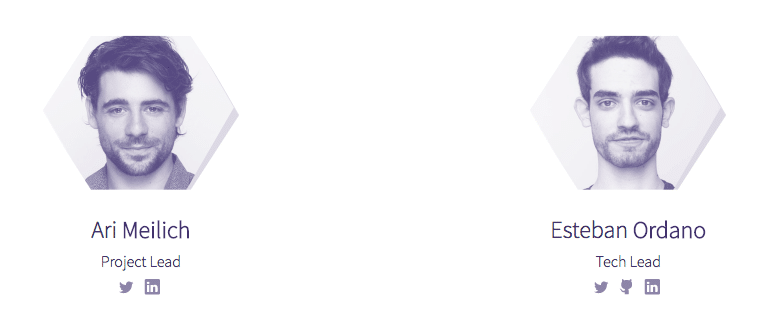What is Decentraland?
Decentraland is an Ethereum-powered virtual reality platform. In this virtual world, you purchase plots of land that you can later traverse, build upon, and monetize. There’s no limit to what you can do. It’s the first digital platform that’s completely owned by its users.
In this Decentraland beginner’s guide, we’ll dig into:
- How does Decentraland work?
- Decentraland team & progress
- Trading
- Where to buy MANA
- Where to store MANA
- Conclusion
- Additional Decentraland resources
How does Decentraland work?
Similar to games like Skyrim and Fallout, Decentraland is an all-immersive virtual universe. However, instead of playing on a 2-dimensional screen, you participate in a 3-dimensional world. It seems to be the logical next step before creating full-blown AI-based games in the physical space à la Westworld.
What is LAND?
In Decentraland, the spaces that you interact with are LAND, non-fungible digital assets that you purchase in the game. Once you own a plot of LAND, you’re free to do with it as you choose. You can create games, applications, gambling services, or even dynamic 3D scenes. But, why stop there? Although not its primary purpose, you can also create LAND-based services around education, professional development, tourism, etc…
The number of LAND is capped, and each plot of LAND is 33 feet by 33 feet, but there’s no limit to its height. If you’re interested in purchasing LAND (or just want to see the map), you should check out the LAND marketplace.
Similar groupings on LAND comprise Districts. Districts are basically communities that revolve around a shared theme. For example, there may be a District just for crypto enthusiasts with cryptocurrency apps and services.
What is MANA?
MANA is Decentraland’s cryptocurrency token. It’s an ERC20 token that you use to purchase plots of LAND as well as pay for in-world goods and services.
When you buy LAND, Decentraland burns the MANA that you purchase it with. The Decentraland team originally sold each plot of LAND for 1000 MANA. Now that there’s a secondary market, though, the LAND prices vary. Currently, the cheapest plot of LAND is 8,888 MANA while more popular areas have price tags in the millions.
Technology Architecture
Decentraland’s protocol has three layers:
- Consensus layer: Tracks land ownership and land content through an Ethereum smart contract.
- Land content layer: Uses a decentralized distribution system to render the content in the virtual world.
- Real-time layer: Provides peer-to-peer connections for users to interact with one another.
The team is building the virtual reality platform using A-Frame. To build in the world, you can first create a model in SketchUp and/or Blender, and then import it onto the platform.
Decentraland team & progress
The Decentraland team is led by Ari Meilich (Project Lead) and Esteban Ordano (Tech Lead). Ordano previously worked at Bitpay as a software engineer and founded Smart Contract Solutions, Inc. Both founders have also worked together in creating Stremium and Bitcore.

Decentraland has been around for longer than you may think. The team hit their first development milestone, Stone Age, in June 2015. This was a simple, pixelated grid that allocated pixels to users through a proof-of-work algorithm. Most recently, they held a Terraform Event in which they sold LAND in the new, 3D world.
The team has also partnered with district0x, Aragon, and imToken to provide some of their services.
Decentraland is fairly unique in the blockchain world with no large, direct competitors. High Fidelity and Sansar both provide spaces to create and sell virtual reality experiences, but they aren’t blockchain based. MARK.SPACE seems to be the most similar project; however, it’s far behind Decentraland in both development and notoriety.
Trading
The MANA price was relatively stagnant until the December/early-January market explosion. Since then, the coin has done relatively well compared to the market maintaining about 75% of its Bitcoin value.
Because the only use for MANA, right now, is to purchase land, it’s hard to predict what will affect the price. An increase in demand for LAND may only lead to a rise in the amount of MANA you need to purchase some – not a rise in the MANA value itself. The MANA price should increase, though, as you become able to buy more things with it.
Where to buy MANA
You can purchase MANA on most major exchanges with either Bitcoin or Ethereum. Huobi and Binance have the largest trading volume of the exchanges.
If you don’t own either of those two coins, and you’re confused where to start, check out our Bitcoin buying guide or Ethereum buying guide.
Where to store MANA
MANA is an ERC20 token, so there are numerous wallet options for you to choose from. We recommend using a hardware wallet like the Trezor or Ledger Nano S. These keep your funds offline and are less susceptible to malicious software.
MyEtherWallet is another popular option if you’re not looking to spend the money on a hardware wallet.
Conclusion
Decentraland is a virtual reality platform that you can purchase land on. Tapping into the imagination of gamers and entrepreneurs everywhere, you’re able to do whatever you want with the land that you purchase.
This is a unique project in a largely untested market. The popularity of “alternative life” games is a good sign, but it’s hard to tell if this will carry over into the 3D and blockchain space. However, if Decentraland gains the adoption that its supporters hope it will, then we may just see an entirely new ecosystem of businesses and experiences flourish before our eyes.
Additional Decentraland resources
The post What is Decentraland (MANA)? | Beginner’s Guide appeared first on CoinCentral.

Coincentral.com is author of this content, TheBitcoinNews.com is is not responsible for the content of external sites.
Our Social Networks: Facebook Instagram Pinterest Reddit Telegram Twitter Youtube











